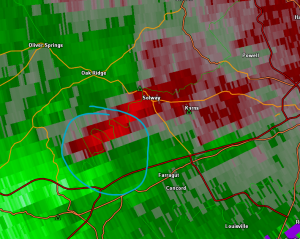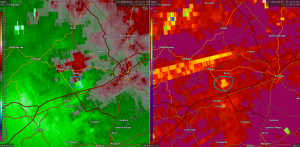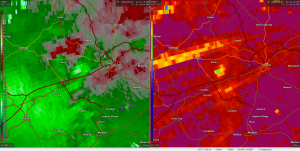Upon review of archived weather radar data from NOAA, this was a pretty severe miss.

As you can see in the above image, there is clear sign of rotation in this storm. The timestamp on this radar scan is 2:09, 10 minutes before the tornado touches down. This rotation is pretty broad, so I can at least see where MRX is coming from not issuing a tornado warning at this point.

In the above image you can see noticeably tight rotation and a CC drop, which means there is a tornado on the ground and lofting debris into the air. CC, which stands for correlation coefficient, essentially measures the continuity of particles in the air using fancy radar polarization techniques. Lower CC values mean greater variation in sizes and shapes of particles in the air, indicating the potential for debris or hail. Whenever you see a CC drop coincident with rotation, as is the case here, that is a guarantee that a tornado is on the ground. Often times, the NWS will issue a "Tornado Warning" that states a damaging tornado is on the ground without even having actually observed a tornado visually, just based on this radar product.

The following scan, as seen above, the area of rotation gets much more obscured. However, the CC drop became much more noticeable. A tornado warning still should have been issued, even at this point as there is still obviously a tornado on the ground.
In subsequent scans, the tornado fizzles out rapidly.
At the end of the day, humans are going to human and make mistakes. This was a pretty severe error. Thankfully, no lives were lost, but this definitely needs to be a learning opportunity for MRX going forward.



